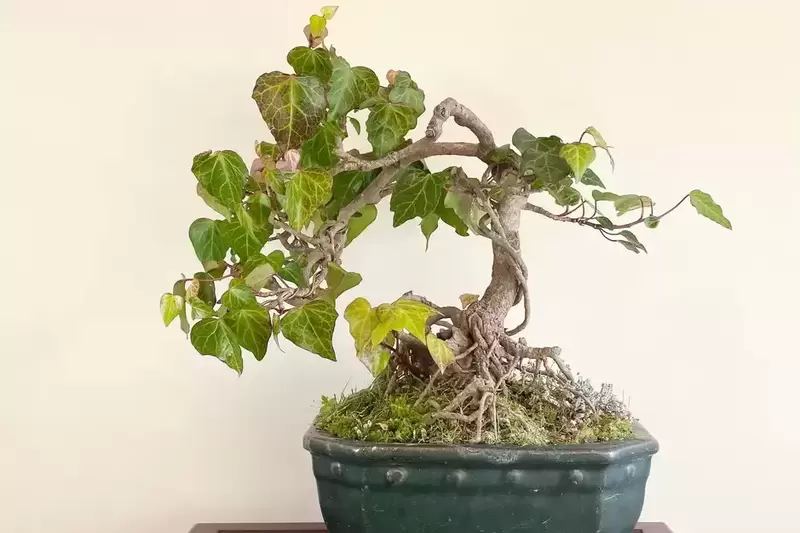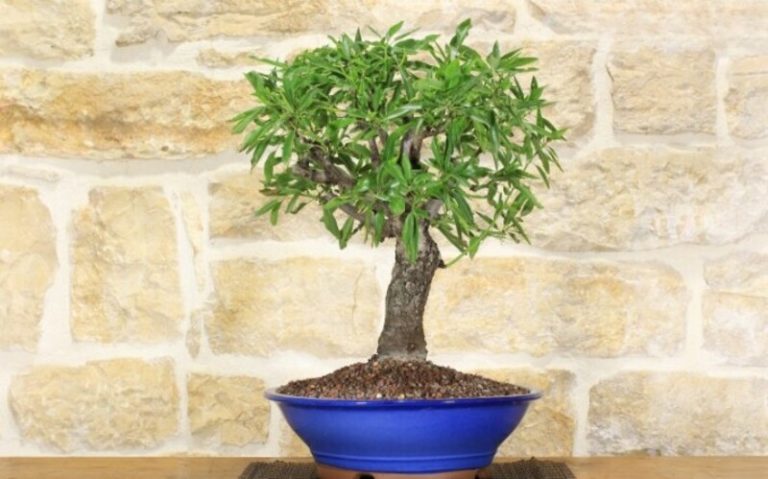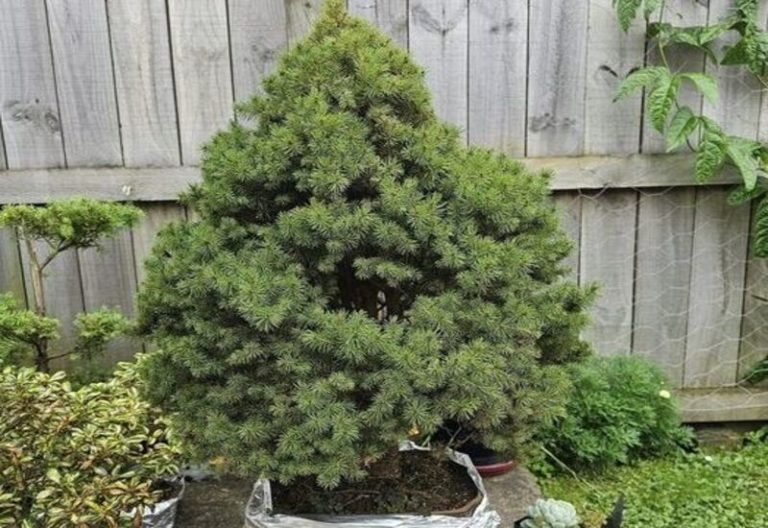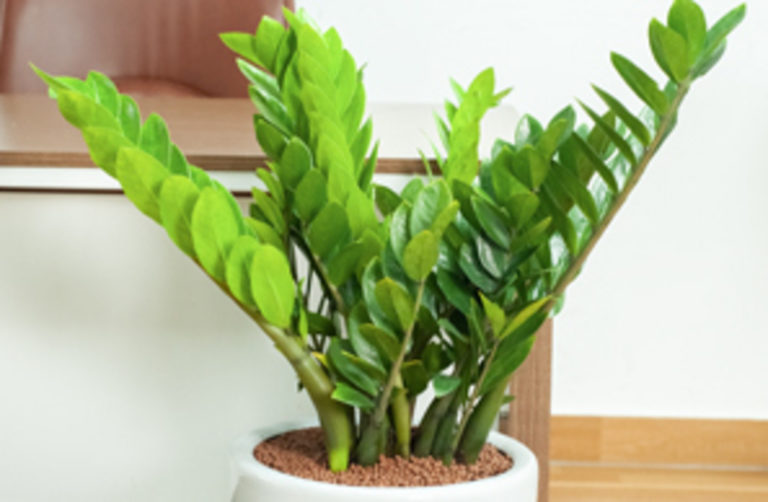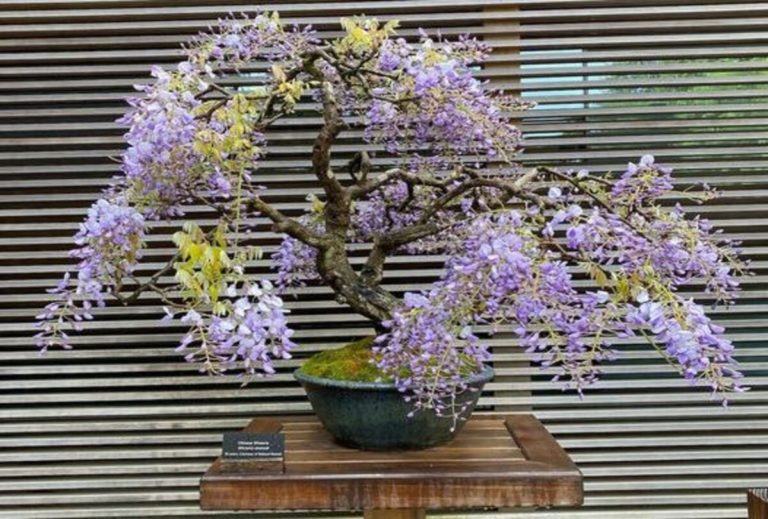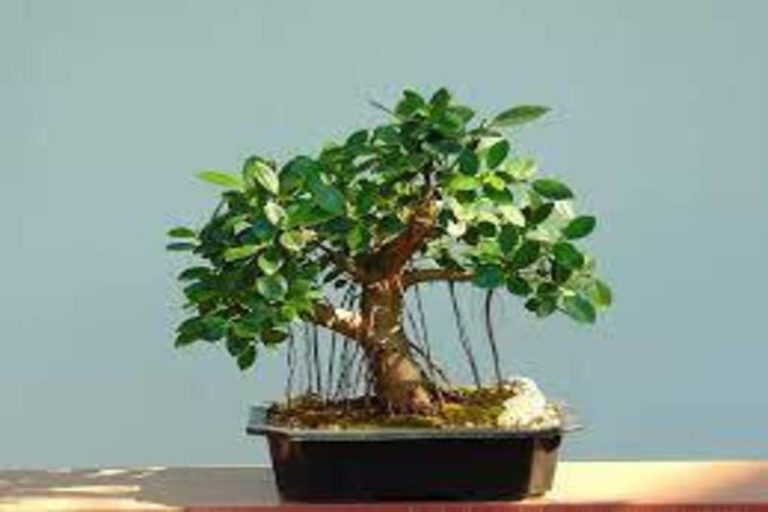English Ivy Bonsai : A Green Oasis in Small Spaces
Growing small trees in pots is an old art form known as bonsai. The English Ivy, formally known as Hedera helix, is a beautiful bonsai plant. In this article, we will delve into the realm of English Ivy bonsai and present a comprehensive guide to growing and caring for these endearing little trees.
What is an English Ivy Bonsai?
English Ivy Bonsai is the practice of growing English Ivy (Hedera helix) as a bonsai tree. It involves training and pruning the vine to create a miniature tree with small, glossy leaves and a trailing growth habit. English Ivy Bonsai requires specific care, including regular pruning, proper watering, and selecting the right pot and soil. It is admired for its compact size and ornamental value, making it suitable for indoor and outdoor display.
History and Origins of the English Ivy Bonsai
The history and origins of English Ivy Bonsai can be traced back to Europe, where the species Hedera helix is native. English Ivy has a long-standing presence in European culture and has been admired for its climbing and trailing nature.
The practice of cultivating English Ivy as a bonsai tree likely emerged as an extension of traditional bonsai art forms. Bonsai itself originated in China and was later refined and popularized in Japan. The art of bonsai involves shaping and training trees into miniature forms, creating living works of art.
English Ivy, with its ability to adapt to different growing conditions and its aesthetic appeal, caught the attention of bonsai enthusiasts. Its trailing growth habit and small, glossy leaves made it a suitable candidate for bonsai cultivation. By applying bonsai techniques such as pruning, shaping, and root control, English Ivy could be transformed into a miniature tree.
Over time, dedicated bonsai artists and enthusiasts experimented with English Ivy Bonsai, refining the techniques and styles specific to this species. The artistry and skill required to shape and maintain English Ivy Bonsai have contributed to its popularity and recognition as a unique bonsai variety.
Today, English Ivy Bonsai can be found in bonsai collections worldwide, admired for its graceful appearance and the artistry involved in its cultivation. The practice of growing English Ivy as a bonsai continues to evolve, with new techniques and styles being developed by bonsai artists and enthusiasts.
English Ivy Bonsai and Their Symbolism
English Ivy Bonsai carries symbolic meanings that have been associated with both the English Ivy plant and the art of bonsai itself. Here are some of the symbolic interpretations often attributed to English Ivy Bonsai:
- Perseverance: English Ivy is known for its climbing and clinging nature, which represents perseverance and determination. In the context of bonsai, English Ivy Bonsai symbolizes resilience and the ability to overcome obstacles. It serves as a reminder to stay strong and persist in the face of challenges.
- Friendship and Fidelity: Ivy has long been associated with friendship and loyalty. In bonsai art, English Ivy Bonsai can be seen as a symbol of enduring friendships and unwavering loyalty. It represents the bonds between individuals that stand the test of time.
- Connection and Unity: The trailing and intertwining vines of English Ivy symbolize connection and unity. In bonsai form, the carefully trained branches and foliage create a harmonious composition, reflecting the interconnectedness of all things. English Ivy Bonsai can serve as a reminder of the importance of community and the interdependence of life.
- Longevity and Endurance: Ivy is known for living a long time and being able to survive in rough circumstances. English An ivy bonsai is a sign of long life and strength. It also shows the knowledge that comes from growing and staying strong for a long time. It helps people value the journey of life and the knowledge that comes with getting older.
- Adaptability and Flexibility: English ivy is amazing in how well it can change and grow in different places. As a bonsai, it stands for being able to change and adapt to new situations. Ivy Bonsai is a reminder to welcome change, adapt to new situations, and find power in our ability to do so.
These symbolic meanings may vary across different cultures and individuals. Ultimately, the interpretation of English Ivy Bonsai’s symbolism is a personal and subjective experience, influenced by one’s beliefs, values, and cultural background.

Characteristics of the English Ivy Bonsai
The English Ivy Bonsai possesses several distinct characteristics that make it a unique and attractive bonsai tree. Here are some key characteristics of the English Ivy Bonsai:
Trailing Growth Habit: English Ivy Bonsai exhibits a trailing growth habit, with its branches cascading downward in an elegant manner. This growth pattern adds a sense of grace and movement to the bonsai’s overall appearance.
Small, Glossy Leaves: The leaves of the English Ivy Bonsai are typically small in size and have a glossy texture. The leaves are usually dark green in color, although certain cultivars may exhibit variegated patterns with white or yellow markings. The foliage’s shine adds to the bonsai’s visual appeal.
Versatility in Styling: English Ivy Bonsai is known for its versatility in bonsai styling. It can be trained in various traditional bonsai styles, including formal upright, cascading, and windswept. The flexibility of its branches allows for creative shaping and design.
Compact Size: English Ivy Bonsai is naturally compact in size, making it well-suited for bonsai cultivation. The ability to maintain a small form while still retaining its trailing growth habit contributes to the bonsai’s overall charm and aesthetic appeal.
Evergreen Nature: The English Ivy Bonsai retains its leaves year-round as it is an evergreen plant. This characteristic ensures that the bonsai remains visually appealing even during the winter months, when many other trees and plants lose their foliage.
Environmental Resilience: Bonsai English Ivy is renowned for its resilience and adaptability. It can flourish in a variety of light levels, temperatures, and moisture conditions. It is appropriate for both indoor and outdoor bonsai cultivation due to its resiliency.
Attractive Root System: The root system of the English Ivy Bonsai adds visual interest to the overall composition. As the roots become exposed over time, they create an intricate network that enhances the bonsai’s natural appearance and gives it a sense of maturity.
The English Ivy Bonsai is attractive because of all of these things put together. It has a trailing growing habit, shiny leaves, is small, and can be styled in many different ways. This makes it a great choice for bonsai fans who want a unique and beautiful bonsai tree.
Types of English Ivy Bonsai
While English Ivy (Hedera helix) is the primary species used for English Ivy Bonsai, there are different varieties and cultivars within the species that can be utilized. Here are some notable types of English Ivy Bonsai:
1. Hedera helix ‘Hibernica’ (Irish Ivy): This variety of English Ivy features larger leaves compared to other cultivars. The leaves have a lobed shape and are typically dark green in color. ‘Hibernica’ is known for its vigorous growth and adaptability, making it a popular choice for bonsai cultivation.
2. Hedera helix ‘Goldchild’: ‘Goldchild’ is a variegated cultivar of English Ivy. Its leaves display a marbled pattern of dark green and creamy yellow. This variation adds visual interest and enhances the overall aesthetics of the bonsai.
3. Hedera helix ‘Needlepoint’: ‘Needlepoint’ is a unique cultivar of English Ivy with narrow, lance-shaped leaves. The leaves have pointed tips, giving them a distinctive appearance. This variety is often preferred for its fine foliage, which creates an elegant and delicate look in the bonsai.
4. Hedera helix ‘Glacier’: ‘Glacier’ is another variegated cultivar of English Ivy. Its leaves have a mix of dark green, light green, and creamy white colors. The variegation is irregular, creating a beautiful mosaic-like effect on the foliage. ‘Glacier’ is highly valued for its eye-catching appearance in English Ivy Bonsai.
5. Hedera helix ‘Sagittifolia’: ‘Sagittifolia’ is characterized by its arrowhead-shaped leaves, which resemble the shape of a spearhead. The leaves have distinct lobes and can vary in shades of green. This cultivar adds a unique visual element to English Ivy Bonsai.
These are just some of the different kinds and forms of English Ivy that can be used to grow bonsai. Each type of English Ivy Bonsai has its own charms and traits, so bonsai fans can try out different choices and make shows that are unique and interesting.

How to Grow an English Ivy Bonsai
Growing an English Ivy Bonsai necessitates paying close attention to its unique requirements and growth practices. Here’s a step-by-step method on growing an English Ivy Bonsai:
Selecting the Right English Ivy: Choose a healthy English Ivy plant from a reputable nursery or garden center. Look for a plant with vibrant foliage and no signs of pests or diseases. Consider the specific variety or cultivar that you prefer for your bonsai.
Potting and Soil: Choose a bonsai pot that is the right size and has good drainage. English Ivy Bonsai does best in dirt that drains well. Use a bonsai soil mix that lets water flow easily but keeps enough water for the plant. The soil mix should include both organic and artificial materials, such as peat moss, manure, perlite, and grit.
Pruning and Training: To give your English Ivy Bonsai the shape and size you want, clip the branches often. Use sharp, clean tools to prune your bonsai to get clean cuts. You can train the stems to grow in the way you want by gently wiring them into place. Make sure you don’t hurt the trees or stop them from growing.
Sunlight and Temperature: Ivy in English Bonsai likes bright sunlight that isn’t too sharp. Put the bonsai in a spot that gets limited sunshine or partial shade. Don’t put it where it will get straight afternoon sun, which can burn the leaves. English ivy can grow in a wide range of temperatures, but it likes it cooler. Keep it away from places that are too hot or too cold.
Watering: English Ivy Bonsai requires consistent and moderate watering. Ensure that the soil is evenly moist but not waterlogged. Allow the top layer of soil to slightly dry out before watering again. Avoid overwatering, as it can lead to root rot. Adjust the frequency of watering based on the environmental conditions and the specific needs of your bonsai.
Fertilizing: During the growth season (spring to fall), give your English Ivy Bonsai a balanced liquid fertilizer. Follow the advice from the maker for the right amount and how often to use it. During the winter, when the plant is dormant, cut back on or stop fertilizing it.
Maintenance: Regularly inspect your English Ivy Bonsai for any signs of pests or diseases. Common issues include aphids, spider mites, and fungal infections. Take prompt action if you notice any problems by using appropriate organic or chemical treatments.
Repotting: Repot your English Ivy Bonsai every two to three years to refresh the soil and stimulate growth. Repotting is typically done in the spring or early summer. Trim the roots during repotting to maintain the desired size and shape of the bonsai.
Remember to observe and adjust your care routine based on the specific needs of your English Ivy Bonsai. Provide it with a suitable environment, regular maintenance, and the necessary attention, and you will enjoy the beauty and growth of your bonsai over time.
Benefits of the English Ivy Bonsai
The English Ivy Bonsai offers several benefits that make it a popular choice among bonsai enthusiasts. Here are some of the benefits of having an English Ivy Bonsai:
- Aesthetic Appeal: The English Ivy Bonsai has a look that is both unique and lovely. It looks beautiful and interesting because it grows in a hanging way, has small, shiny leaves, and stays small. The bonsai’s beautiful shape and lush leaves can make any room or outdoor place look better.
- Indoor and Outdoor Versatility: English ivy bonsai grows well both inside and outside. It can grow well as a bonsai indoors, giving your home or office a touch of nature. It looks great in parks, patios, and rooftop displays when it is grown outside. Because it can grow in many different situations, it can be put in many different places.
- Air Purification: Like its larger counterpart, the English Ivy Bonsai has air-purifying qualities. It can help filter out pollutants from the surrounding air, enhancing the overall air quality in indoor environments. This makes it a beneficial addition to spaces where air circulation may be limited.
- Stress Reduction: Caring for bonsai, including the English Ivy Bonsai, can be a therapeutic and stress-relieving activity. Engaging in the nurturing and artistic aspects of bonsai cultivation promotes relaxation and mindfulness. Taking the time to care for your bonsai can provide a sense of calm and tranquility.
- Educational Value: English Ivy Bonsai offers a valuable learning experience for bonsai enthusiasts. Growing and maintaining the bonsai involves understanding its specific care requirements, training techniques, and aesthetic principles. It provides an opportunity to develop skills in horticulture, pruning, wiring, and overall bonsai artistry.
- Symbolism and Meaning: English Ivy Bonsai carries symbolic meanings associated with perseverance, friendship, and adaptability. It can serve as a reminder of these qualities and inspire personal reflection and growth. The symbolism associated with the bonsai adds depth and meaning to its presence in your living space.
- Low Maintenance: English Ivy Bonsai doesn’t need as much care as some other types of bonsai. It is a tough plant that can grow in many different places. With the right care, like feeding, trimming, and fertilizing, it can grow well and stay nice-looking without needing too much work.
These advantages make the English Ivy Bonsai an enticing choice for bonsai lovers looking for an aesthetically beautiful, flexible, and gratifying bonsai tree. Whether for ornamental purposes, air purification, or personal enjoyment, the English Ivy Bonsai has various benefits that make it a welcome addition to any bonsai collection.
Displaying and Showcasing the English Ivy Bonsai
Displaying and showcasing your English Ivy Bonsai is an exciting part of bonsai ownership. Here are some tips to effectively present and highlight the beauty of your English Ivy Bonsai:
1. Selection of Display Area: Choose an area that showcases your English Ivy Bonsai in the best possible light. Consider factors such as lighting conditions, temperature, and humidity. Indoors, place it near a window with filtered sunlight. Outdoors, find a spot with partial shade to protect the bonsai from the harsh afternoon sun.
2. Bonsai Stands or Tables: Place your English Ivy bonsai on a bonsai pedestal or table to elevate it. This designates a space for the bonsai and enables it to be viewed and appreciated from multiple angles. Bonsai supports are available in a variety of styles and materials; choose one that complements the aesthetic of your bonsai and its environment.
3. Accent Plants and Decorative Elements: Consider including accent plants or decorative elements to improve the overall presentation. You can create an aesthetically pleasing composition by surrounding the base of the bonsai with small blossoming plants or vegetation. In addition, decorative rocks, miniature figurines, and tiny bonsai display accessories can add depth and intrigue to the display.
4. Rotating the Bonsai: Rotate the English Ivy bonsai on a regular basis to guarantee even growth and to highlight different perspectives. This enables adequate light to reach all aspects of the bonsai and prevents it from leaning in one direction. Every few weeks, rotate the bonsai to promote balanced development.
5. Bonsai Exhibitions and Shows: Participating in bonsai exhibitions or shows can provide opportunities to showcase your English Ivy Bonsai to a wider audience. These events allow you to display your bonsai alongside other enthusiasts’ creations, exchange ideas, and receive feedback from experienced bonsai artists. Follow local bonsai clubs or organizations to stay informed about upcoming exhibitions or shows.
6. Photography and Social Media: Photograph the beauty of your English Ivy Bonsai and post it on social media platforms or bonsai communities. Photographing your bonsai from various perspectives and in various lighting situations will emphasize its distinct features and help others to appreciate its beauty. Participating in the online bonsai community may give you with ideas and helpful comments on your display.
7. Seasonal Changes: Embrace the seasonal changes and adapt your display accordingly. For example, during the autumn season, you can highlight the bonsai’s vibrant foliage colors. In winter, you can decorate the bonsai with miniature ornaments or place it against a backdrop of snow or winter-themed elements.
Remember to regularly maintain and care for your English Ivy Bonsai to ensure its health and vitality, as a well-maintained bonsai enhances its visual appeal. By thoughtfully displaying and showcasing your English Ivy Bonsai, you can share its beauty and inspire others to appreciate the artistry of bonsai.
Styling and Design of an English Ivy Bonsai
The styling and design of an English Ivy Bonsai is an artistic process that involves shaping and training the tree to achieve a desired aesthetic. Here are some considerations and techniques for styling and designing your English Ivy Bonsai:
Research and Inspiration: Begin by researching different bonsai styles and designs to gain inspiration for your English Ivy Bonsai. Explore traditional styles such as formal upright, informal upright, cascade, windswept, and others. Observe mature English Ivy plants in nature or bonsai gardens to understand their growth patterns and natural forms.
Trunk Selection: Choose a primary trunk or main branch that has interesting movement, taper, and character. This will serve as the focal point of your bonsai’s design. Consider the desired style and select a trunk that aligns with the chosen aesthetic.
Pruning and Branch Development: Pruning is a crucial aspect of bonsai design. Regularly trim and shape the branches to develop the desired structure. Remove any excess or crossing branches to create a well-defined silhouette. Encourage branching and back-budding by pruning selectively and creating spaces for new shoots to emerge.
Wiring and Training: You may shape and place the branches according to your design idea by using wire. Use bonsai wire that is the correct thickness for the branches you’re dealing with. Wrap the wire carefully around the branch, using light pressure to guide it into the appropriate position. To avoid injury, avoid excessive stress. To avoid wire marks, examine the development on a regular basis and modify or remove the wire as appropriate.
Cascading and Trailing Effects: English Ivy Bonsai is known for its trailing growth habit, making it suitable for cascading or semi-cascade styles. Train the branches to hang gracefully over the edge of the bonsai container, creating a cascading effect. Ensure the branches are properly supported to maintain their desired position.
Layering and Foliage Density: Create depth and visual interest by layering the foliage. Trim the leaves along the branches to achieve a balanced distribution and avoid overcrowding. By removing some leaves, you can expose the structure of the branches and enhance the overall bonsai design.
Patience and Refinement: Styling and designing a bonsai is a gradual process that requires patience and time. Regularly observe your English Ivy Bonsai’s growth and make adjustments as needed. Refine the design over time by making small, deliberate changes to further enhance the tree’s aesthetics.
Remember that creating a bonsai is a personal art form, and there are no hard and fast rules. Let your imagination guide you and change the style to fit your tastes while keeping in mind how the English Ivy grows naturally. Enjoy the process of shaping and perfecting your English Ivy Bonsai as it grows into a unique and beautiful live work of art.
How to Care for and Maintain an English Ivy Bonsai
A healthy, growing, and long-lasting English Ivy Bonsai depends on how well it is cared for and kept up. Here are some important tips for caring for it:
- Watering: English Ivy Bonsai prefers moderate watering. Ensure that the soil remains evenly moist but not waterlogged. Check the moisture level by inserting your finger into the soil about an inch deep. Water thoroughly when the top layer of soil feels slightly dry. Avoid overwatering, as it can lead to root rot. Adjust the frequency of watering based on the environmental conditions and the specific needs of your bonsai.
- Sunlight and Temperature: Ivy bonsai grows well in bright, indirect sunlight. Put it near a window with limited sunlight or somewhere with some shade. Don’t put the bonsai in the full afternoon sun because it will burn the leaves. English ivy can grow in a wide range of temperatures, but it likes it cooler. Keep it from getting too hot or too cold.
- Pruning and Trimming: Your English Ivy Bonsai needs to be pruned often to keep its shape and size. Cut back the branches that are growing too fast, remove any dead or yellowing leaves, and shape the branches to get the look you want. During the growing season, prune to encourage bushier growth and keep the plant’s shape. Use bonsai trimming tools that are clean and sharp to make clean cuts and do as little damage as possible to the tree.
- Fertilizing: During the growth season (spring to fall), give your English Ivy Bonsai a balanced liquid fertilizer. Follow the advice from the maker for the right amount and how often to use it. Don’t use too much fertilizer because it can cause too much growth or burn the roots. During the winter, when the plant is dormant, cut back on or stop fertilizing it.
- Humidity: English Ivy Bonsai prefers moderate to high humidity levels. To increase humidity, you can place the bonsai pot on a humidity tray filled with water or use a room humidifier. Avoid placing the bonsai near air vents or heaters that can cause dry air.
- Repotting: Every two to three years, in the spring or early summer, you should repot your English Ivy Bonsai. Repotting lets you trim the tree’s roots, refresh the soil, and give the tree enough room to grow. Cut back any roots that are getting too big, and repot the bonsai in a bonsai soil mix that drains well.
- Pest and Disease Control: Check your English Ivy Bonsai for bugs or diseases like aphids, spider mites, or fungal problems on a regular basis. If you notice a problem, you should move quickly to fix it. Follow the directions to get rid of pests or diseases by using the right organic or chemical treatments.
- Winter Care: English Ivy Bonsai can tolerate cooler temperatures, but it is important to protect it from freezing temperatures. If kept outdoors, provide a sheltered location or use frost protection techniques. Indoors, place the bonsai in a cool room with sufficient light, away from heat sources or cold drafts.
Check on your English Ivy Bonsai often and make changes to your care plan as needed. Depending on its surroundings and how it grows, each bonsai may have its own set of needs. If you take good care of your English Ivy Bonsai, it will grow well and bring beauty to your space for many years.
English Ivy Bonsai Care Sheet
| Aspect | Care Tips |
| Watering | – Keep the soil evenly moist, but avoid waterlogging |
| – Water when the top layer of soil feels slightly dry | |
| – Adjust watering frequency based on environmental conditions | |
| Sunlight | – Place in bright, indirect sunlight |
| – Avoid direct afternoon sunlight to prevent leaf scorching | |
| Temperature | – Tolerates a wide range of temperatures, prefers cooler conditions |
| – Protect from extreme heat or cold drafts | |
| Humidity | – Moderate to high humidity preferred |
| – Use humidity trays or room humidifiers to increase humidity | |
| Fertilization | – Use a balanced liquid fertilizer during the growing season |
| – Follow manufacturer’s instructions for dilution and frequency | |
| – Reduce or stop fertilization during the dormant phase | |
| Pruning and Trimming | – Regularly prune to maintain shape and size |
| – Trim excessive growth and remove dead or yellowing leaves | |
| – Prune during the active growing season for bushier growth | |
| Wiring and Styling | – Use wiring to shape and position branches as desired |
| – Be careful not to apply excessive tension or damage the tree | |
| Repotting | – Repot every 2-3 years in well-draining bonsai soil mix |
| – Trim excessive root growth and provide space for growth | |
| Pest and Disease Control | – Regularly inspect for pests and diseases |
| – Treat issues promptly using appropriate treatments | |
| Winter Care | – Protect from freezing temperatures |
| – Provide sheltered location outdoors or cool room indoors | |
| Regular Maintenance | – Regularly observe and adjust care routine as needed |
| – Monitor growth, health, and make necessary adjustments |
Remember to consider the specific needs of your English Ivy Bonsai, as individual variations and environmental factors may require slight adjustments to the care routine. Regular maintenance and attentive care will help your English Ivy Bonsai thrive and remain healthy.
Conclusion
English Ivy Bonsai is a captivating bonsai tree with its unique foliage and graceful growth pattern. Cultivating and caring for this bonsai requires attention to detail, but the rewards are worth it. Its charm and beauty make it a valuable addition to any bonsai collection. So, embrace the world of English Ivy Bonsai cultivation and let its elegance inspire you.
FAQ:
Q: What is an English Ivy Bonsai?
A: An English Ivy Bonsai is a miniature tree cultivated from the English Ivy (Hedera helix) plant. It is trained and pruned to have a compact form and attractive foliage, making it a popular choice for bonsai enthusiasts.
Q: Can I keep an English Ivy Bonsai indoors?
A: Yes, English Ivy Bonsai can be kept indoors. It thrives in bright, indirect sunlight and moderate humidity. Place it near a window with filtered sunlight and provide proper care to ensure its health.
Q: How often should I water my English Ivy Bonsai?
A: Temperature, relative humidity, and soil moisture all affect the frequency of watering. When the upper layer of soil feels barely dried, water the bonsai. To prevent root decay, maintain an evenly hydrated soil without overwatering.
Q: What kind of pruning does an English Ivy Bonsai require?
A: English Ivy Bonsai requires regular pruning to maintain its shape and size. Trim back excessive growth, remove dead or yellowing leaves, and shape the branches to achieve the desired aesthetic. Prune during the active growing season to encourage bushier growth.
Q: Can I wire an English Ivy Bonsai to shape its branches?
A: Yes, you can wire an English Ivy Bonsai to shape its branches. Use bonsai wire of an appropriate thickness and apply gentle pressure to guide the branches into the desired position. Be careful not to apply excessive tension that could damage the tree.
Q: When should I repot my English Ivy Bonsai?
A: Repotting is normally done in the spring or early summer every two to three years. Repot the bonsai in a well-draining bonsai soil mix to provide room for the tree’s development.
Q: How do I protect my English Ivy Bonsai in the winter?
A: English Ivy Bonsai can tolerate cooler temperatures but needs protection from freezing temperatures. If kept outdoors, provide a sheltered location or use frost protection techniques. Indoors, place it in a cool room with sufficient light, away from heat sources or cold drafts.
Q: What are some common pests or diseases that affect English Ivy Bonsai?
A: English Ivy Bonsai may be susceptible to pests like aphids and spider mites. It can also develop fungal infections. Regularly inspect your bonsai for any signs of pests or diseases, and take prompt action to treat the issues using appropriate treatments.
Q: Can I propagate English Ivy Bonsai from cuttings?
A: Yes, English Ivy Bonsai can be propagated from stem cuttings. Take a healthy cutting, remove the lower leaves, and plant it in a well-draining soil mix. Keep it moist and provide indirect light until roots develop.
Q: How fast does an English Ivy Bonsai grow?
A: English Ivy Bonsai has a moderate growth rate. With proper care and maintenance, it can grow several inches per year. Regular pruning and training can help control its growth and maintain its desired size and shape.
Q: Can I train my English Ivy Bonsai into different bonsai styles?
A: Yes, English Ivy Bonsai can be trained into various bonsai styles, including formal upright, informal upright, cascade, and windswept. Its flexible branches allow for shaping and styling according to your artistic vision.
Q: Does English Ivy Bonsai require special soil?
A: English Ivy Bonsai prefers well-draining bonsai soil that allows proper root development. A mix of bonsai soil components like akadama, pumice, and lava rock works well. Avoid using heavy or compacted soil that retains excessive moisture.
Q: Can English Ivy Bonsai be grown outdoors?
A: Yes, English Ivy Bonsai can be grown outdoors in suitable climates. It thrives in partial shade and cooler temperatures. Ensure it is protected from extreme heat or cold, and avoid exposing it to direct afternoon sunlight.
Q: Can English Ivy Bonsai be trained to climb or cascade?
A: Yes, English Ivy Bonsai’s trailing growth habit allows it to be trained to climb or cascade. With proper training and support, you can encourage its branches to climb a structure or cascade over the edge of a bonsai container.
Q: How long does an English Ivy Bonsai live?
A: With proper care, an English Ivy Bonsai can live for several decades. It is a hardy plant that can withstand a variety of conditions. Regular maintenance, including watering, pruning, and protection from extreme temperatures, helps ensure its longevity.
Q: Can English Ivy Bonsai be kept indoors year-round?
A: English Ivy Bonsai can be kept indoors year-round if provided with adequate light, humidity, and care. However, it is beneficial to give it occasional outdoor exposure to natural light and fresh air, if possible.
Also Read:

